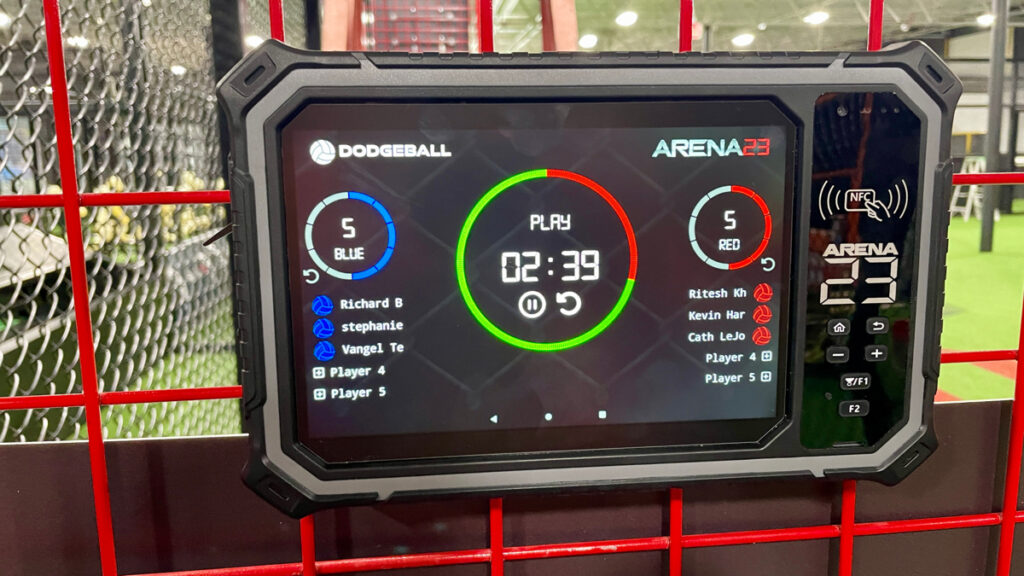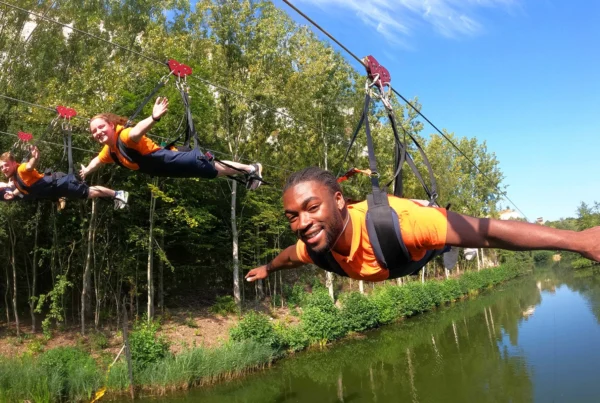Introduction to Gamification in Sports
Gamification is a concept that has gained significant traction across various industries, notably in the sports sector. It refers to the application of game design principles in non-game contexts to enhance user engagement and motivation. In the realm of sports, gamification often manifests through interactive elements such as leaderboards and real-time scoring systems. These features not only make the experience more engaging for fans but also increase participation among players and audiences alike.
The integration of these elements transforms traditional sports viewing and playing into dynamic interactions. For instance, interactive leaderboards allow participants to track their performance and compare it with others, fostering a sense of competition and community. Real-time scoring updates ensure that audiences are constantly engaged with the unfolding events of a game, providing immediate feedback and enhancing the overall excitement. This blend of technology and sports creates an environment where users feel they have a stake in the outcome, significantly increasing their involvement.
Emerging technologies are reshaping the gamification landscape, introducing innovative methods for enhancing athletic experiences. From mobile applications that gamify workout routines to augmented reality experiences during live events, the possibilities are endless. Sports organizations are increasingly adopting these strategies to retain fan interest, attract new audiences, and provide a more immersive experience. Examples of successful gamification strategies can be seen in various sports, where leagues and teams have effectively utilized interactive platforms to boost attendance and viewer engagement. As such, gamification is not merely a trend; it represents a fundamental shift in how sports are experienced and enjoyed.
The Role of Interactive Leaderboards in Enhancing Engagement
Interactive leaderboards play a pivotal role in the realm of gamification, fundamentally altering the way participants and spectators engage with sports. By incorporating real-time scoring mechanisms, these leaderboards serve not only as performance trackers but also as catalysts for competition among players. The ability to view standings instantaneously creates a dynamic environment where every point scored or lap completed can shift the rankings, boosting the excitement and investment from both competitors and fans.
The design of these interactive leaderboards is crucial; user-friendly interfaces enhance the overall experience. By ensuring ease of navigation and clarity in displaying results, participants can focus more on their performance rather than struggling with technology. Such intuitiveness fosters an engaging atmosphere, allowing users to immerse themselves in the experience of the game. This immediate visibility of scores and rankings encourages athletes to push their limits while simultaneously providing fans with a clear context of the competition unfolding before them.
Another noteworthy aspect of interactive leaderboards is their contribution to community-building and social interaction. By sharing scores, achievements, and milestones on social media, players and fans create a connected ecosystem that promotes a sense of belonging. For instance, events like marathons and esports tournaments have successfully implemented interactive leaderboards, showcasing how these tools facilitate communication and engagement within communities. Competitors can post their rankings online, leading to discussions, friendly challenges, and camaraderie among players. These platforms transform traditional viewing into an interactive fun experience that appeals to both the participants and the audience.
In essence, interactive leaderboards serve as vital components in enhancing engagement in sports through their competitive nature, user-friendly design, and community fostering capabilities. The growing use of these tools underlines their importance in the ongoing evolution of gamification within sports.
Real-Time Scoring: Revolutionizing Sports Experiences
The landscape of sports is undergoing a profound transformation through the innovative adoption of real-time scoring technologies. Advances in data collection and analytics are enabling a level of immediacy that was previously unattainable, creating a thrilling and engaging experience for fans, players, and coaches alike. By harnessing the power of gamification, sports events are increasingly becoming more interactive and immersive, providing audiences with the opportunity to follow every nuance of the game as it unfolds.
Modern scoring systems leverage a combination of high-frequency data collection methods, such as sensors and tracking technologies, supplemented by advanced analytics. This symphony of data allows for the visualization of performances in real-time, with graphs, heat maps, and sophisticated statistical presentations enhancing the viewing experience. For example, sports like basketball and soccer utilize these techniques to present live player statistics, shot probabilities, and heat maps that pinpoint player movement throughout the game. Such detailed insights not only satisfy curiosity but also allow fans to engage critically with the unfolding drama.
The benefits of real-time scoring extend well beyond mere entertainment. Coaches and sports strategists gain unprecedented access to immediate performance data, enabling them to make informed decisions during critical moments. Players can also analyze their own performances on-the-fly, fostering a culture of continuous improvement and competitive spirit. Fans, propelled by the gamification of statistics, become more invested as they track their favorite teams and players, amplifying engagement levels profoundly.
Overall, the incorporation of real-time scoring represents a pivotal shift in the sports industry. As these technologies continue to evolve, we can expect an increasingly enriched experience that appeals to a diverse audience, transforming not just how we watch sports, but how we interact with them.
Looking Ahead: The Future of Gamified Sports
The realm of gamified sports is poised for significant transformation as we venture into an era defined by technological advancements. The integration of interactive leaderboards and real-time scoring systems is anticipated to evolve further with the advent of augmented reality (AR) and virtual reality (VR). These technologies offer immersive experiences, enhancing the spectator’s journey in ways that were once the realm of science fiction. Imagine a sports event where fans not only watch but also engage with the game through a holographic interface, allowing them to witness their favorite players’ stats and performance in real-time right from their living rooms.
Furthermore, the deployment of artificial intelligence (AI) can facilitate personalized experiences tailored to individual preferences. AI could analyze a user’s interests and historical interactions to create customized leaderboards, provide predictive analytics, and offer insights that enhance understanding of the game. This level of interactivity not only makes the sport more engaging but also fosters a deeper emotional connection between fans and teams, as the experience becomes inherently personal.
However, as organizations escalate their adoption of these technologies, they must also navigate critical challenges. Data privacy and security considerations become paramount, as heightened data collection may lead to potential breaches. Ensuring user trust will be vital for the widespread acceptance of gamification strategies in sports. Additionally, leaders in the sports industry must address the digital divide to ensure equitable access to these interactive experiences, as not all fans may possess technological resources. Failure to do so could exacerbate existing inequalities in fan engagement and participation.
The implications of these innovations could be substantial, reshaping not only the landscape of fan interaction but also the broader community dynamics surrounding sports. As we advance, it will be crucial for stakeholders to collaborate in leveraging gamification effectively while being mindful of the associated challenges, ultimately fostering a more inclusive and engaging environment for all.













